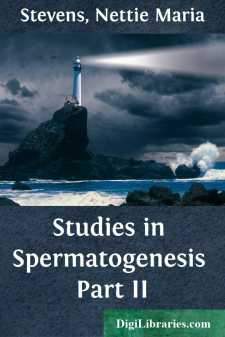Categories
- Antiques & Collectibles 13
- Architecture 36
- Art 48
- Bibles 22
- Biography & Autobiography 813
- Body, Mind & Spirit 142
- Business & Economics 28
- Children's Books 15
- Children's Fiction 12
- Computers 4
- Cooking 94
- Crafts & Hobbies 4
- Drama 346
- Education 46
- Family & Relationships 57
- Fiction 11828
- Games 19
- Gardening 17
- Health & Fitness 34
- History 1377
- House & Home 1
- Humor 147
- Juvenile Fiction 1873
- Juvenile Nonfiction 202
- Language Arts & Disciplines 88
- Law 16
- Literary Collections 686
- Literary Criticism 179
- Mathematics 13
- Medical 41
- Music 40
- Nature 179
- Non-Classifiable 1768
- Performing Arts 7
- Periodicals 1453
- Philosophy 64
- Photography 2
- Poetry 896
- Political Science 203
- Psychology 42
- Reference 154
- Religion 513
- Science 126
- Self-Help 84
- Social Science 81
- Sports & Recreation 34
- Study Aids 3
- Technology & Engineering 59
- Transportation 23
- Travel 463
- True Crime 29
Nettie Maria Stevens
Nettie Maria Stevens (1861–1912) was an American geneticist and one of the first to discover the role of chromosomes in determining sex. She conducted research on mealworms, where she observed that male insects had one large and one small chromosome (now known as X and Y), while females had two large chromosomes (X and X). This work led to the conclusion that sex is determined by the chromosomal combination. Despite her significant contribution, she didn't receive full recognition during her lifetime, as many of her discoveries were overshadowed by male colleagues, like Edmund Beecher Wilson.
Author's Books:
Sort by:
COLEOPTERA. Trirhabda virgata (Family Chrysomelidæ). Two species of Trirhabda were found in larval, pupal, and adult stage on Solidago sempervirens, one at Harpswell, Maine, the other at Woods Hole, Massachusetts. The adult insects of the two species differ slightly in size and color, the germ cells mainly in the number of chromosomes, Trirhabda virgata having 28 and Trirhabda canadense 30 in...
more...
RESULTS OF INVESTIGATIONS. Termopsis angusticollis. In the termite it was not found to be practicable to dissect out the testes. The tip of the abdomen was therefore fixed and sectioned, young males whose wings were just apparent being used. The cells are all small, and could not be studied to advantage with less than 1500 magnification (Zeiss oil immersion 2 mm., oc. 12). In the spermatogonium there...
more...



